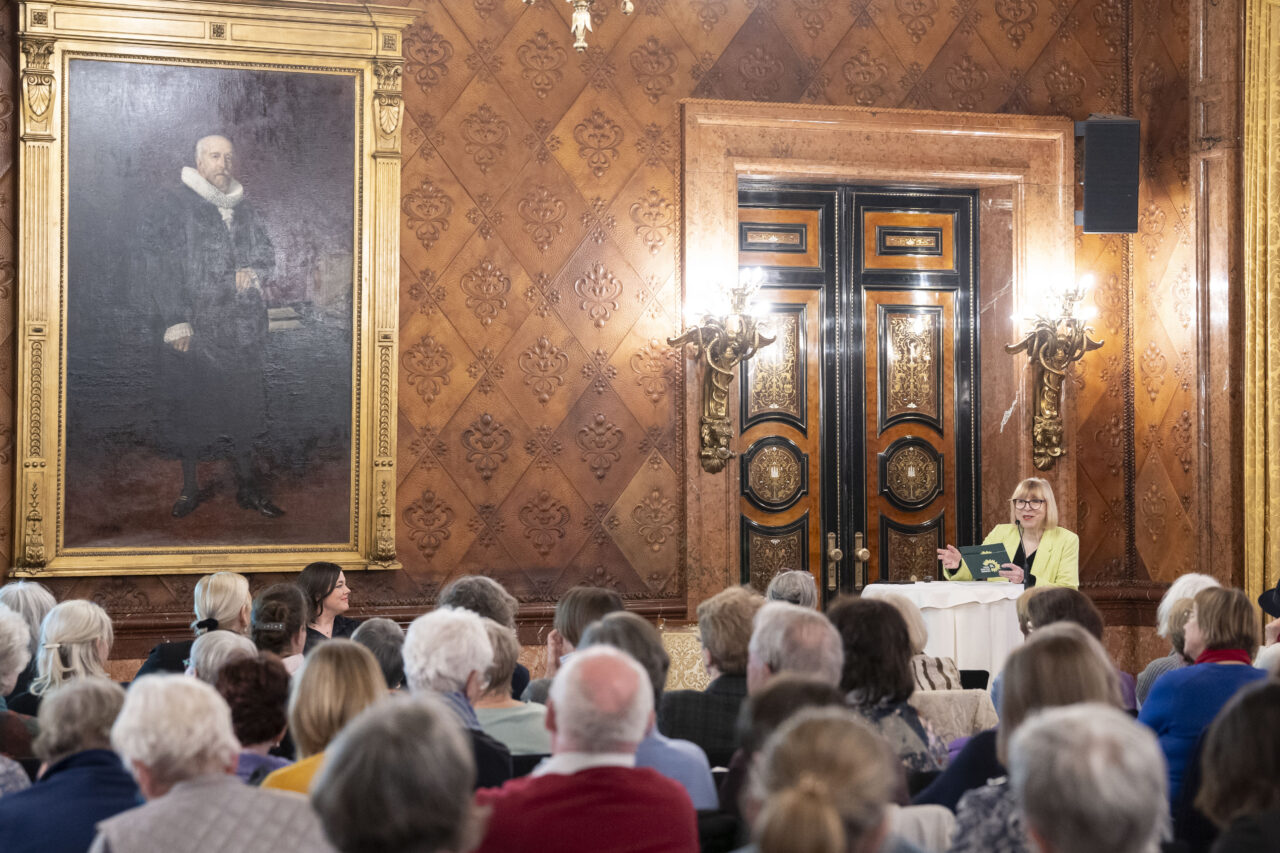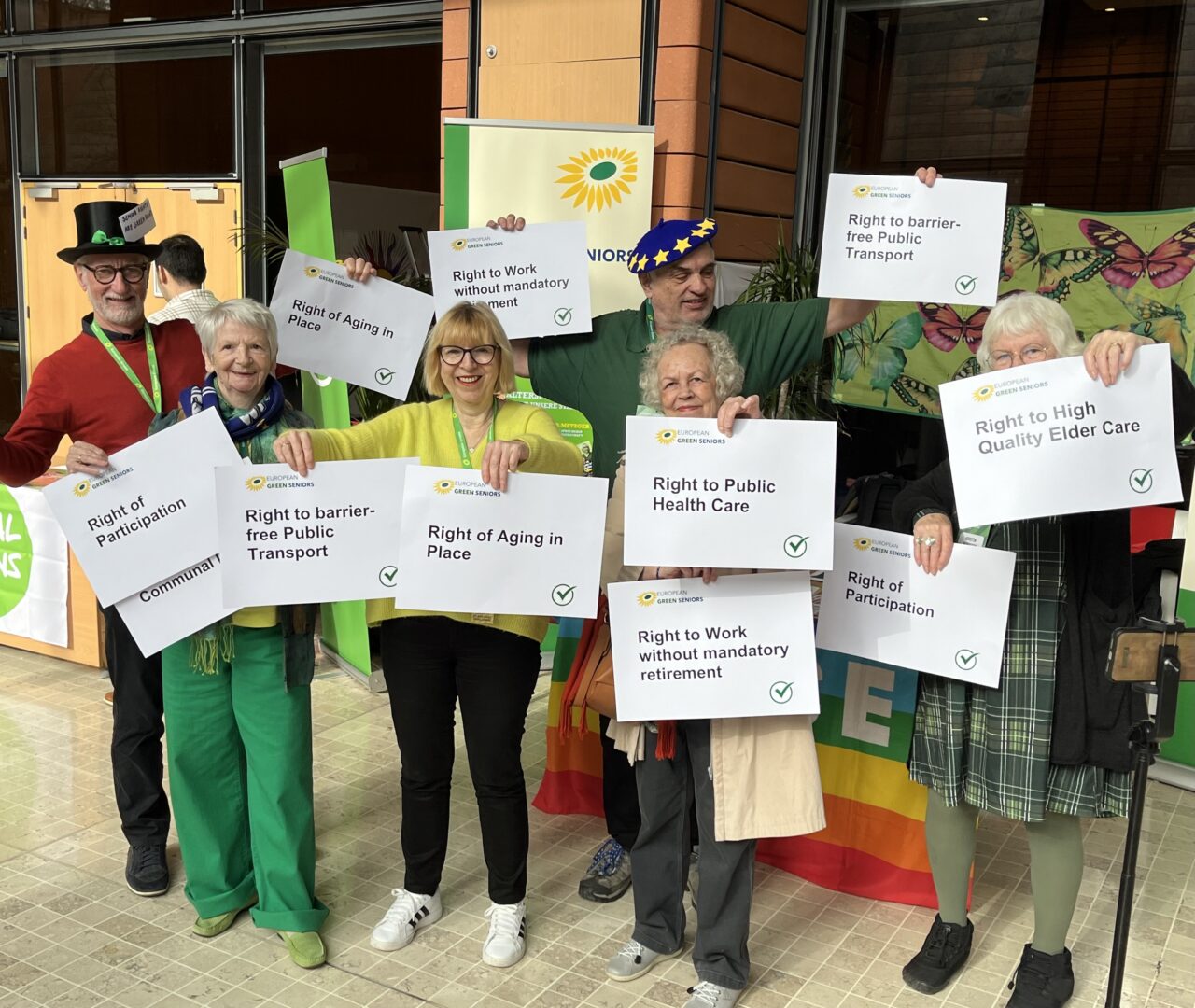Demographic Transition: Multiple Issues – Green Timely Answers
Infrastructure for MOBILITY
Position Paper
Introduction
Europe was one of the first regions to enter the demographic transition. As a result, today’s European population is one of the most aged of the six regions worldwide, with 21.3 percent of the population aged 65 years and over in 2023. In 2030 the population is projected to be 25 percent over the age of 65 years. It is necessary that European, federal, regional and municipal governments act today for equitable, sustainable solutions!
This demographic evolution has a special impact on the organization of our lives, cities and villages. It requires reorganization of public services, provision of quality care and livable pensions, access to communal life to avoid loneliness. Above all, it also requires full accessibility and functioning infrastructure for mobility.
We need to move away from a discriminating, deficit-orientated view of old age towards a potential-orientated one. Green Policy is always standing for participation for all people – at all ages.
Older people have the right to participate in normal life, and we need to create the framework conditions for this. One of the key-transitions is to move away from car-centered transport and instead focus on pedestrians, cyclists, wheelchairs and public transportation in the very near future as a part of a green and decarbonization transition.
Many older people would be happy to leave their cars behind if there were suitable alternatives. In consequence, all cities need urgently to develop a walking policy. And it is clear: The mobility transition cannot be achieved without older people.
We European Green Seniors believe in this transition, and we will fight for it on all levels. And remember, what is good for older people, is good for the whole society.
The following conditions must be met:
- Barrier-free public transport in our villages and cities, including barrier-free access to all carriages of local-, regional- and long-distance trains, barrier-free stops and transfer points, barrier-free access to stations. Many older people are lonely, as a result of serious limitations to their mobility due to deficits in design of walkways and public transportation.
- We want barrier-free inter-European high-speed trains and night trains that make travelling easier and are a real alternative to flying.
- On-demand shuttles for the last mile, for example bus, shared taxi, self-driving shuttles. People with limited mobility cannot walk the last or first kilometer to the stop. It is important that the shuttles take people directly to their destination and do not drop them off at special stops. This is particularly important for people with visual impairments. In some places, there are already voluntary services that provide transport. This must be supported and safeguarded by the public sector, the responsibility lies with the taxpaying community.
- Barrier-free sidewalks of sufficient width without protruding stones or gully cover or other tripping hazards including regular clearing of snow-covered paths in winter. Pavements must be lowered at crossings.
- More age-friendly benches with armrests and backrests that are not too high and not too low to allow people to take a breather. It would be helpful for more participation to have a bench every 300 to 500 meters, especially on target routes (e.g. on the way to a hospital or public library, medical center or grocery shop). Very good are so-called Friendship Benches, which originally came from Zimbabwe, where the bench was developed to help people, having to wait in line for much needed therapy. Here in Europe, Friendship Benches are specially labelled with the intent to help people to talk to each other and prevent loneliness.
- Dedicated parking spaces for e-scooters, so that they are not lying around on the pavements.
- Ecological lighting of sidewalks, for example with motion detectors, because for many older people it is harder to see in the dark and easier to fall. A fall might have different consequences for older people than for younger people, sometimes they can’t get back on their feet at all.
- Separation of pedestrian paths and bicycle lanes, for example with protected bike lanes. E-bikes or e-scooters that pass by quickly without being heard are a big problem for people who are hearing impaired. In addition, the sense of balance often deteriorates in old age, meaning that people lose their balance.
- Shared areas in the countryside must be clearly marked with a speed limit for cars and traffic signs that give priority to pedestrians and then cyclists.
- Sufficient public barrier-free toilets free of charge or other systems for public use (for example the friendly toilet in the catering trade). Some people are afraid to leave their homes because they can’t find a toilet on time when they’re out and about. This is especially important for old people, who don’t have the money to simply go to a café.
- Heavily reduced fee or free senior ticket for public transport, because poverty in old age is a growing problem.
- Longer green phases for pedestrians when crossing wide roads (see introduction, more focus on pedestrians than on cars).
- Develop sensibilization campaigns all over Europe, above all in public transport, for pedestrians, bicycles users and car drivers in order to respect one another and to be aware of the situation of older persons and their needs.
- Mandatory empathy and assistance training for all public transport staff to ensure they are better equipped to help older people and those with disabilities. We not only need machines, but also people who provide information and help.
- Health centers, parks, and social centers should be easily accessible by public transport and walking.
- It is important to have regular feedback systems where seniors can report issues or suggest improvements related to mobility and public transport. This should be done with regular community engagement meetings.
In Conclusion
Since public transportation and infrastructure is divided among all levels of government (local, regional, provincial and national) the European Union must provide a practical framework in its legislation to bridge all these political entities.
European Green Seniors are an integral part of today’s Demographic Transition. We therefore call on all Green Party Organizations for full support of our Position Paper.
The Board




